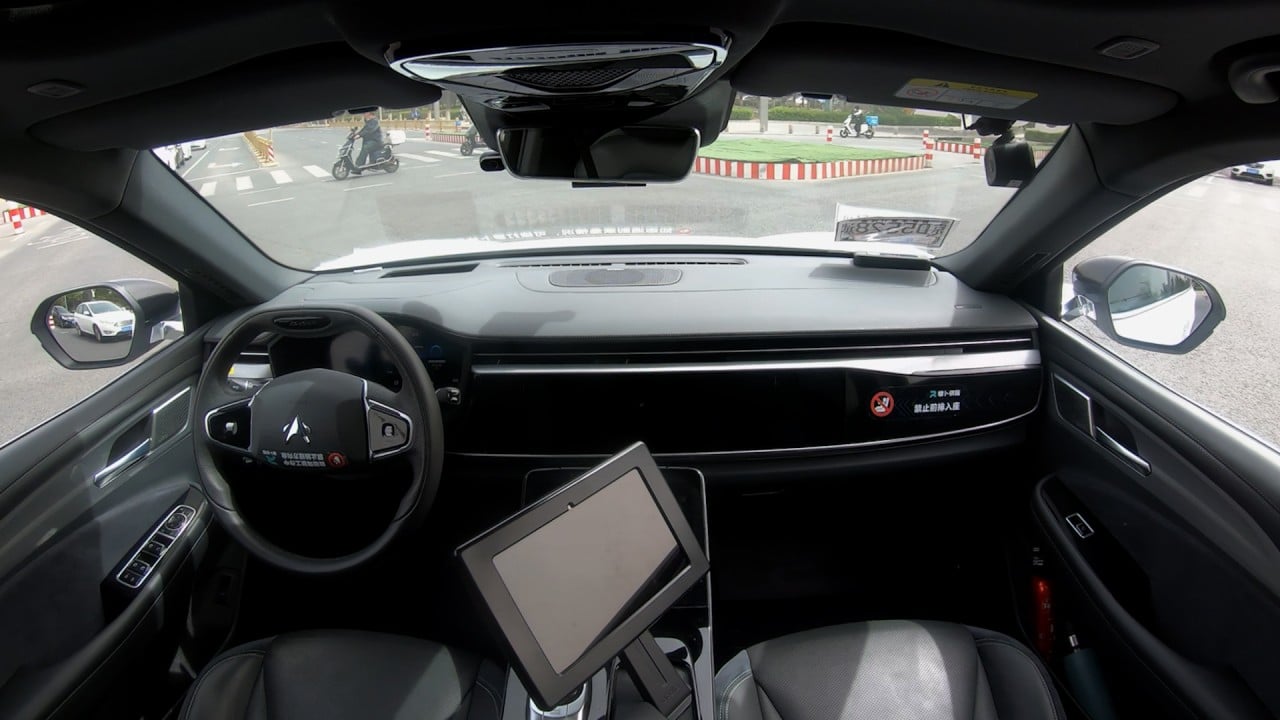
Didi to mass produce self-driving EVs in partnership with Chinese carmaker GAC
- The first mass-produced robotaxi, based on AION’s latest EV platform, will be equipped with Didi’s autonomous driving solutions
- Didi has been preparing for a comeback with autonomous driving cars, a sector favoured by the government, after a 2021 crackdown
Chinese ride-hailing giant Didi Chuxing said it plans to introduce autonomous driving vehicles into its car fleets by 2025, after renewing a partnership with Guangzhou Automobile Group (GAC) to make them.
Under the joint venture project dubbed AIDI, GAC’s subsidiary AION New Energy Automobile and Didi’s autonomous driving unit will team up to manufacture high-level autonomous driving vehicles, which are expected to be deployed into Didi's car fleets in 2025, according to a Didi statement on Wednesday.
The first mass-produced robotaxi, based on AION’s latest electric vehicle (EV) platform, will be equipped with Didi’s autonomous driving solutions. Didi has been testing its self-driving technology solutions with a small fleet in Shanghai’s Jiading district.
“Thanks to the launch of the joint AIDI project, Didi autonomous driving has entered a new phase in mass production,” said Zhang Bo, chief technology officer of Didi and CEO of Didi Autonomous Driving, adding that the unit has made many breakthroughs in the self-driving technology.
Didi zooms past big fine and Covid-19 to narrow losses in 2022
Beijing-based Didi has been preparing for a comeback with autonomous driving cars, a sector favoured by the government, after a 2021 crackdown wiped out billions of dollars in value and led to thousands of job losses at a company once hailed as China’s answer to Uber.
Last month, Didi unveiled a concept robotaxi called Neuron, which it says has a 50 per cent larger passenger space than normal taxis as the vehicle does not have a driver’s seat.
However, industry experts say autonomous driving remains a long bet, with low prospects for near-term profitability and years of heavy investment for technology upgrades.
Autonomous driving technology has been a key focus area in recent years for both self-driving start-ups and big tech firms such as Baidu, Tencent Holdings and Didi.
Baidu tops other Chinese companies in terms of its number of robotaxi fleets and has deployed these hi-tech cars for testing on open roads in Beijing, Chongqing and Changsha and many other cities, although the road to large-scale commercialisation and profitability remains unclear.
The adoption rate for truly driverless vehicles remains uncertain because of complex traffic situations created in China’s busy city streets, and lack of clear rules on accidents involving autonomous cars.
Most autonomous driving vehicles in China still have a driver sitting behind the wheel, who can take over control of the car in case of emergency.
Didi’s foray into autonomous driving dates back to 2016 when it set up a dedicated unit.
In 2020, it started allowing users to hail self-driving cars in designated areas in Shanghai, and launched an automated operation and maintenance centre in the city earlier this year, offering battery charging for autonomous vehicles, repairs and parking.
Ride-hailing giant Didi unveils robotaxi concept car called Neuron
Didi, still the country’s top ride-hailing platform, had 587 million annual active users and 23 million annual active drivers worldwide as of the end of March, the company said.
Didi saw its revenue decline by 19 per cent to 140.8 billion yuan (US$20.33 billion) in 2022 as China’s stringent Covid-19 lockdowns and the regulatory clampdown bit into its top line.
The company narrowed its net loss to 23.8 billion yuan for 2022, from a net loss of 49.3 billion yuan in 2021, according to its April annual report, its first filing since it delisted from the New York Stock Exchange last year.


